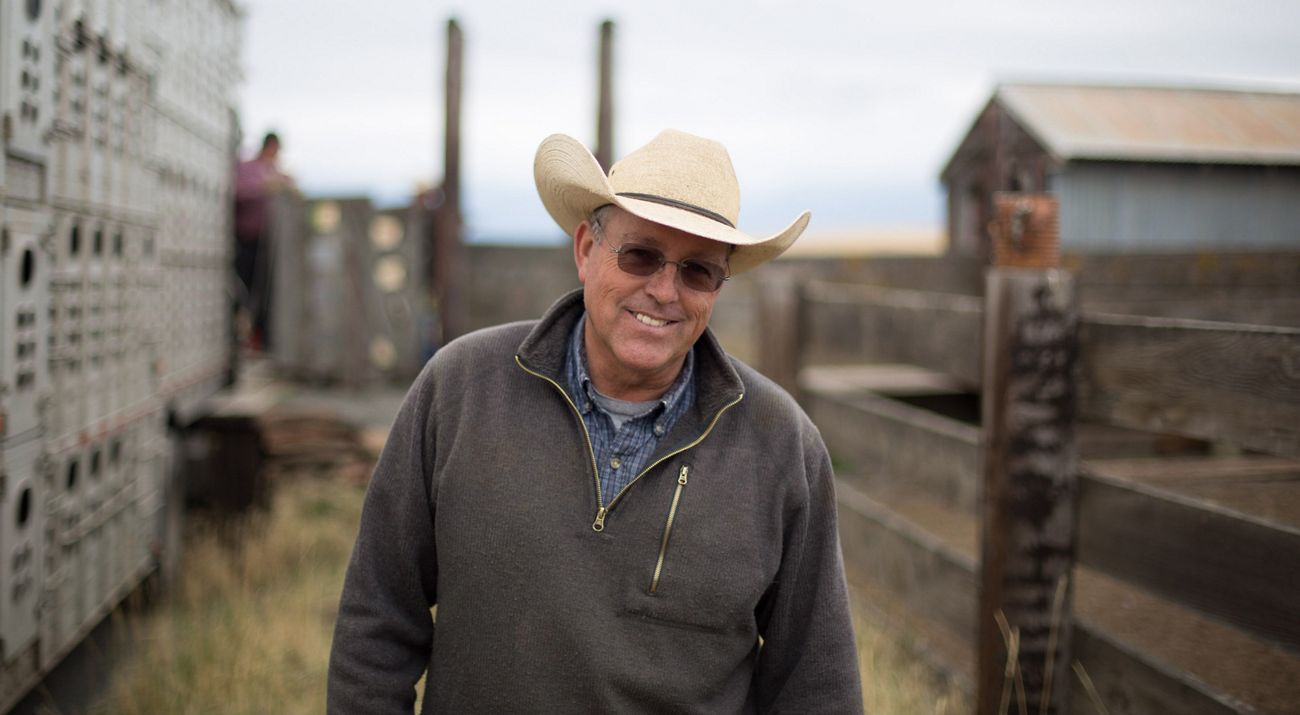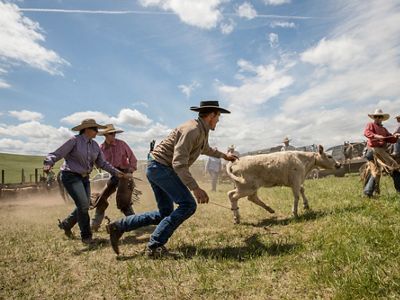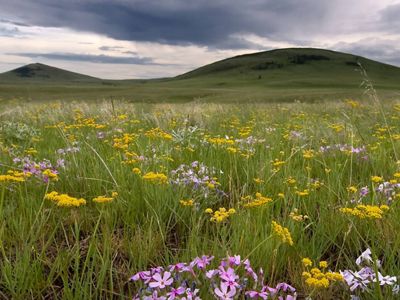
Common Ground
Conservation easements ensure sustainability on Zumwalt Prairie Preserve.

It's no secret that there can be tension between conservation interests and cattle ranchers, but the owners of the Lightning Creek Ranch in eastern Oregon have found some common ground.
Lightning Creek Ranch owners, the Probert family—led by Dan and Suzy Probert—have teamed up with The Nature Conservancy, the Natural Resource Conservation Service (NRCS) and The Climate Trust to ensure their 12,225-acre ranch will be managed to benefit both ranching livelihoods and the native habitat and wildlife it supports. The Proberts sold an agricultural conservation easement on the property that will prohibit conversion of native grassland caused by tilling or energy development, while allowing the property to be used for livestock grazing that follows a grazing management plan.
“Wallowa County is a very special and unique place, and I believe it is absolutely critical that we protect our resources for future generations,” said Dan Probert. “Because of this conservation easement, Lightning Creek Ranch will always remain a working ranch while also protecting some of the most beautiful and ecologically important lands in the country.”
Quote: Dan Probert, Lightning Creek Ranch

By granting the development rights to The Nature Conservancy, we were able to reduce the land cost to one that is manageable for our family... while ensuring the Zumwalt Prairie remains an intact grassland.
Keeping Carbon in the Ground
In addition to helping conserve North America's largest remaining grassland of its type and supporting the local ranching community, this agricultural conservation easement prevents the Lightning Creek Ranch from any conversion for residential or commercial energy development or crops. Preventing these changes and maintaining the native grassland will keep an estimated 55,000 tons of carbon in the ground, a benefit that secured funding for this transaction from The Climate Trust.
“Lightning Creek Ranch is the first grasslands project to join our Climate Trust Capital Fund I portfolio, and we are elated to be able to provide capital to this charismatic project in our own backyard,” said Mik McKee, Land Asset Manager for The Climate Trust. “The environmental benefits to be gained from preserving native grasslands are vast, with impacts ranging from improved water quality and soil erosion prevention to the safeguarding of carbon stored in the ground. This investment grade project reflects our ongoing strategy of supporting quality projects in the early stages of development to elevate their impact.”

The Nature Conservancy protects and manages Zumwalt Prairie Preserve as a working landscape in collaboration with ranchers such as Dan Probert. The preserve encompasses 33,000 acres, 4400 of which are designated as a National Natural Landmark. Home to an incredible array of biodiversity, the prairie is alive with bees, butterflies, hawks, golden eagles, wildflowers and more.
TNC manages several trails on the preserve that are open to the public. There isn't anything quite like visiting the prairie in the spring during the wildflower bloom—the vastness of the landscape captivates and inspires. Learn more about visiting Zumwalt Prairie Preserve.
What is a Conservation Easement?
Conservation easements protect land for future generations while allowing owners to retain certain property rights. Through an easement, landowners willingly sell or donate only those rights necessary to protect specific conservation values, such as fish and wildlife habitat. Easements are individually tailored to meet a landowner's goals and the landscape’s needs. Because the land remains in private ownership, with the remainder of the rights intact, an agricultural easement property continues to provide economic benefits for the area in the form of jobs, economic production and property taxes.
“We know grazing is an important factor for grassland conservation,” said Jeff Fields, Zumwalt Project Manager for The Nature Conservancy in Oregon. “On large landscapes like Zumwalt Prairie, native species thrive with occasional disturbance, such as fire and grazing. Just like fire, it is critical that grazing happens under the right timing and intensity, which is what we guide with our grazing management plans on these easements.”
By the Numbers
Much of the funding for this purchase—$1.3 million—was provided by the USDA Natural Resources Conservation Service through its Agricultural Conservation Easement Program—Agricultural Land Easements (ACEP-ALE). This program provides financial and technical assistance to provide long-term conservation and protection of agricultural lands and their related benefits. Created in the 2014 Farm Bill, this is the first ACEP-ALE project to be completed in Oregon.
After a generous gift of $700,000 from the Doris Duke Charitable Foundation, The Nature Conservancy is still privately fundraising $400,000 for the purchase of this land easement, which the Proberts sold to the Conservancy for $200,000 less than its appraised value.
“Ranch real estate values in Wallowa County and in other scenic areas are valued far above a fair market value for a ranching enterprise,” Probert said. “By granting the development rights to The Nature Conservancy, we were able to reduce the land cost to one that is manageable for our family. If we, as ranchers and farmers, want our children to be able to afford a farm or ranch and remain land owners rather than tenants on "legacy" ranches, then we need to find a way to reduce land costs to our heirs. Conservation easements are a great way to do this while ensuring the Zumwalt Prairie remains an intact grassland with the same characteristics that make us proud to call this beautiful place home.”